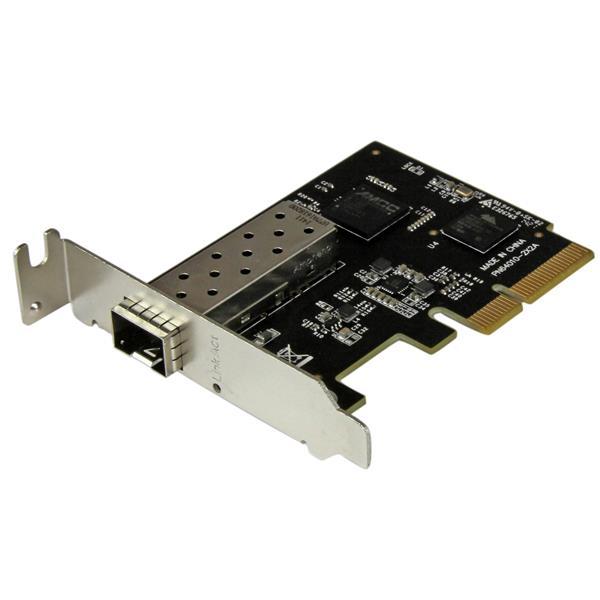- Related articles
- Optical Transceivers for Cisco WS-C2960S-F24TS-S Switch
- Optical Transceivers for Cisco UCS-EP-MDS9148SL2 Switch
- All Cisco SFP-10G-SR-S’s Information (Overview, Features, Datasheet PDF, Price, Specificat
- What is 1000BASE Transceiver?
- Optical Transceivers for Cisco IE-4000-16GT4G-E Switch
- Optical Transceivers for Cisco SLM224PT-UK Switch
- Optical Transceivers for Cisco SG250-26HP-K9-EU Switch
- Optical Transceivers for Cisco WS-C3650-48TD-E Switch
- All Cisco ONS-SI-155-I1's information (List price, Specs, Datasheet PDF, Compatibility mat
- All Cisco GLC-FE-100BX-U's information (List price, Specs, Datasheet PDF, Compatibility ma

A network interface controller (NIC, also known as a network interface card, network adapter, LAN adapter or physical network interface and by similar terms) is a computer hardware component that connects a computer to a computer network.
Early network interface controllers were commonly implemented on expansion cards that plugged into a computer bus. The low cost and ubiquity of the Ethernet standard means that most newer computers have a network interface built into the motherboard.
Modern network interface controllers offer advanced features such as interrupt and DMA interfaces to the host processors, support for multiple receive and transmit queues, partitioning into multiple logical interfaces, and on-controller network traffic processing such as the TCP offload engine.

Network Card 10Gb
The PCI Express 10 Gbps Network Card lets you add a 10-Gigabit Ethernet port to your server or high-powered workstation through a PCI Express x4 (or higher) slot.
With rising demand on network resources due to large file transfers, increase in network users and multimedia content, more bandwidth is often required at various levels of your infrastructure. This 10 Gb NIC offers a cost-effective solution for your file or application server or even a high-powered workstation to transfer more data, faster.
With 10GbE performance, your business can tackle more complex problems and create more opportunities for Our 10GbE network interface cards are specifically designed for use in server environments attached to local area networks or storage area networks and provide serious performance right to the desktop client. Make complex applications simple by adding these highly affordable 10 gigabit Ethernet cards.
Ethernet Card Definition
The 10 Gigabit Fiber Network Card is a cost-effective solution that delivers fast and reliable 10 Gbps network access at longer distances than copper-based networks. Using the SFP+ transceiver of your choice, you can connect your PCI Express-based server or workstation directly to your 10G fiber optic network.
The 10g sfp+ network card adapts to your network fiber connection and distance requirements to offer flexible configuration via an open SFP+ slot, and is compatible with most 10GbE SFP+ transceivers. With broad SFP+ compatibility this cost-effective fiber card lets you use your preferred SFP+ module, giving you more options to connect your computer directly to a fiber network at greater distances.
Summary
Gigabit networking is now a sufficiently common feature of modern networking devices that it shouldn't carry too great a cost premium. As for your motherboards, the odds are good that they already have gigabit functionality built in, whether you know it or not. Before we go any further, I should note that this guide does not apply to wireless networks; the factors that constrain speeds on wireless networks are entirely different from those that limit speeds on wired networks.





















































